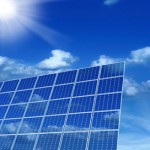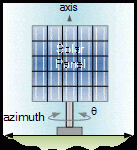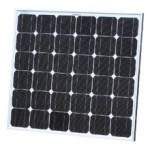
Grid connected photovoltaic systems deliver its solar energy directly to the permanently connected utility grid via single-phase or three-phase inverter. Grid connected PV systems are the most common type of installed solar power scheme compared to stand-alone photovoltaic systems, which require batteries for energy storage. Battery-less grid connected PV systems are therefore more cost effective, requiring less components and maintenance but require a higher quality inverter.

Stand alone photovoltaic solar systems are completely disconnected from the utility grid so all the electrical energy required must be generated by solar, wind, hydro or some other type of renewable energy system. Generally, stand alone PV systems consist of a PV panel, DC generator, some form of energy storage (for example a battery), controllers, inverters and some types of AC or DC load elements. In stand alone PV systems its DC and AC loads all share the same battery bank for night time energy storage.

Solar panel orientation ensures that a photovoltaic solar panel or a complete pv array is correctly orientated and positioned. A photovoltaic solar panel fixed to a roof or mounted directly onto a frame is a staionary object while the sun is constantly changing its position in the sky relative to the earth making the correct solar panel orientation difficult with regards to the direct sunlight coming from the sun at all times of the day. Tracking the position of the sun in order to expose a solar panel to maximum radiation at any given time of the day is the main purpose for orientating a pv panel.

Photovoltaic panels are made up of individual solar cells connected together to produce the require panels output power. The power output of a photovoltaic solar cell is given in watts, and is equal to the product of voltage times the current with the average power output of a typical photovoltaic solar cell being around 2 watts, so to create a photovoltaic panel of 100 or 200 watts individual pv cells need to be connected together in a series and/or parallel combination to give any desired voltage, current and power output producing a photovoltaic panel.

Solar power uses the suns radiant light energy to produce heat, light and power in the form of electricity, to power our world making solar power a true renewable energy resource. The solar radiation reaching the earth’s surface equals about 1000 watts per square metre in clear conditions when the sun is near the zenith making it inexhaustible and locally available everywhere on the earth. One of the best uses of solar power is in using photovoltaics to generate electricity and thermal panels to heat water were concentrated solar power uses the immense heat provided by solar irradiation concentrated on a small area.